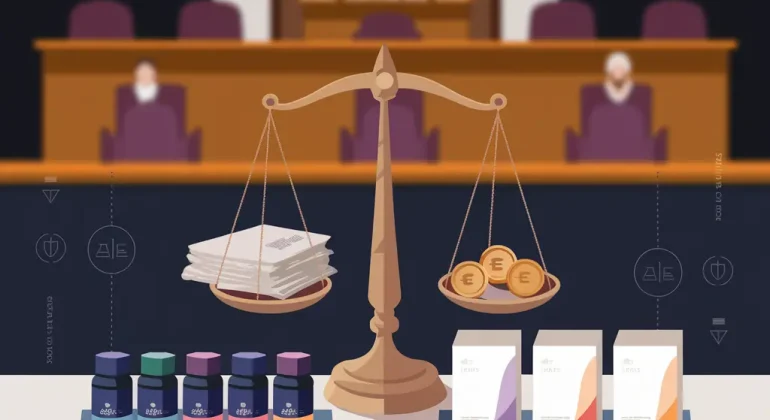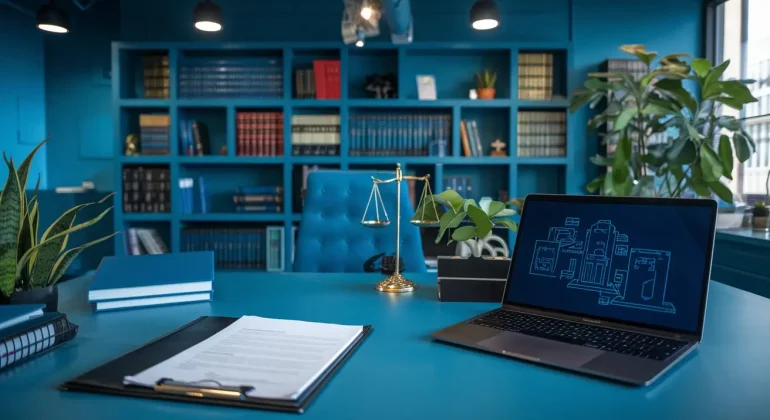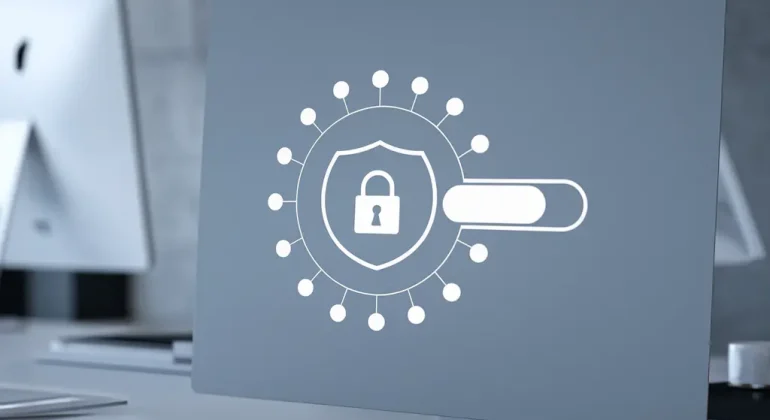Table of contents
- Key differences between besigns and trademarks
- Legal framework in France
- Judicial nature of contestation
- Grounds for contestation
- Legal framework in the european union
- Administrative options at EUIPO
- Grounds for contestation in the EU
- Procedural differences
- The impact of the EU design package
- Practical tips for protecting and contesting designs
- Recent case studies and emerging trends
- Industry-specific considerations in design contestation
- Economic impact of design protection
- The future of design law: Trends and innovations
- Integrating sustainability into design protection
- Collaboration between legal and creative teams
- Cultural and geographic influences in design protection
In the field of intellectual property, contesting designs is a highly specialized area requiring legal precision and strategic insight. Unlike trademarks, designs lack specific administrative procedures, such as opposition or invalidity actions, making judicial procedures the primary route for contestation. In this article, we explore the legal framework, grounds, and procedures involved in contesting designs, providing actionable insights for businesses and legal professionals alike.
-
Key differences between designs and trademarks
Designs, protected under the French Intellectual Property Code (CPI), serve to safeguard the appearance of a product. Unlike trademarks, which benefit from administrative opposition processes, designs can only be contested through judicial actions.
Key distinctions include:
- No opposition mechanism: Designs do not benefit from an EUIPO-like opposition procedure.
- Broader protection scope: While trademarks protect distinctive signs, designs focus on the aesthetic and functional aspects of a product.
Example: A French company attempted to register a design for furniture that closely resembled an existing trademark-protected logo. The court ruled in favor of the trademark holder, demonstrating the broader implications of aesthetic overlaps.
-
Legal framework in France
Judicial nature of contestation
In France, designs are governed by the French Intellectual Property Code (CPI). Unlike trademarks, there are no administrative opposition procedures for designs. Contestation is only possible via judicial routes, such as:
- Actions for nullity before national courts.
- Defensive exceptions in infringement litigation.
Grounds for contestation in France
Two primary categories of grounds apply:
- Relative grounds: Conflicts with prior rights (e.g., earlier designs, copyrights, trademarks).
- Absolute grounds: Lack of compliance with statutory criteria such as novelty or individual character.
A notable feature: French law includes no statute of limitations for nullity actions (PACTE Law, L 521-362 CPI), ensuring long-term contestability. This makes France particularly favorable for rights holders.
Case Study: A French fashion house successfully contested a competitor’s design by demonstrating lack of novelty, leveraging the flexibility of the French judicial system.
-
Legal framework in the European Union
Administrative options at EUIPO
In the EU, Registered European Union Designs (REUDs) are governed by Council Regulation (EC) No 6/2002. Unlike France, the EU offers a dual-track system for contesting designs:
- Administrative invalidity proceedings: Handled by the EUIPO, offering a streamlined and cost-effective option.
- Judicial actions: Available before national courts, typically for Unregistered European Union Designs (UEUDs).
Grounds for contestation in the EU
The EUIPO allows invalidation requests based on:
- Lack of novelty: The design must be entirely new.
- Individual character: The design must produce a distinct overall impression on informed users.
- Functional necessity: Designs dictated solely by technical function are excluded from protection.
Administrative invalidity proceedings at the EUIPO are subject to specific procedural timelines, ensuring swift resolution compared to French judicial processes.
Statistical Insight: EUIPO reports indicate that approximately 40% of invalidity requests are upheld, emphasizing the need for comprehensive pre-registration checks.
-
Procedural differences
Filing mechanisms
- France: Nullity actions must be filed directly before a national court.
- EU: Administrative invalidity requests can be submitted to the EUIPO, bypassing courts initially.
Cost and time efficiency
- France: Judicial proceedings can be time-consuming and costly due to the need for legal representation and court fees.
- EU: Administrative procedures at the EUIPO are faster and less expensive, making them more accessible for businesses.
Appeal processes
- France: Appeals follow the hierarchical court system, culminating in the French Supreme Court.
- EU: EUIPO decisions can be appealed to the Board of Appeal, then to the General Court, and finally to the CJEU.
-
The impact of the EU design package
The new EU design regulation significantly enhances the framework for protecting and enforcing designs by introducing alternative procedures, such as opposition and cancellation mechanisms. These changes promote harmonization between national and European systems, aligning national procedures with the EUIPO’s approach for trademarks. This ensures consistency and accessibility across the EU.
Key benefits of the EU design package:
- Administrative invalidity mechanisms: Faster and less expensive alternatives to judicial proceedings.
- Harmonized opposition procedures: Allow third parties to raise objections at an earlier stage, during the registration process.
- Increased accessibility: By 2027, all Member States must adopt these procedures, ensuring uniformity across jurisdictions.
Example: A German technology firm utilized the EUIPO’s administrative invalidity procedure to challenge a competitor’s design, saving significant legal fees compared to a traditional court case.
-
Practical tips for protecting and contesting designs
- Conduct comprehensive searches: Before filing a design, ensure its originality through thorough market and database research.
- Maintain detailed documentation: Keep records of creation processes to establish proof of novelty.
- Collaborate with legal experts: Engage with intellectual property specialists to navigate the complex legal requirements effectively.
- Leverage cross-jurisdictional strategies: Coordinate with international partners to challenge designs that infringe upon global rights.
Additional Tip: Utilize tools like the EUIPO’s DesignView database to assess potential conflicts prior to registration.
-
Recent case studies and emerging trends
Case study: A major fashion brand vs. Fast fashion retailer
In 2022, a well-known luxury brand contested the design of a fast fashion retailer’s handbag. The court found that the retailer’s design lacked individual character, ruling in favor of the luxury brand. This case underscores the importance of robust design documentation.
Emerging trend: Blockchain for design authentication
Blockchain technology is increasingly being used to authenticate design originality and protect against counterfeiting. By creating immutable digital records, businesses can enhance the traceability and security of their designs.
-
International perspectives on design contestation
Design contestation varies significantly across jurisdictions, reflecting differences in legal traditions, economic priorities, and enforcement mechanisms. For example:
- United States: Designs are primarily protected under design patents, with the United States Patent and Trademark Office (USPTO) managing applications. Contestation often revolves around patent validity and infringement disputes in federal courts. The U.S. system places a higher emphasis on technical functionality compared to aesthetic originality.
- China: As the world’s largest manufacturer, China has faced challenges with design piracy. However, recent reforms to its intellectual property laws have introduced stricter protections and improved enforcement mechanisms, including specialized IP courts.
- Japan: The Japanese design system emphasizes harmony and functionality, and the country has streamlined its administrative opposition mechanisms. This ensures a faster resolution compared to judicial processes in Europe or the U.S.
These international variations underline the importance of tailoring strategies for contestation and registration to the target jurisdiction.
-
The role of technology in protecting designs
The advent of new technologies has transformed how designs are created, registered, and contested:
- Blockchain for design authentication: Blockchain provides immutable records of design creation, ensuring proof of originality. This technology is particularly effective in combatting counterfeiting and unauthorized duplication.
- AI-assisted design analysis: Artificial intelligence tools can assess similarities between designs, helping to identify potential conflicts or infringements during the registration phase.
- Digital marketplaces and IP enforcement: Platforms like Amazon and Alibaba have implemented IP protection programs, allowing rights holders to file complaints against counterfeit designs. These platforms also use machine learning to detect and remove infringing products automatically.
By leveraging these tools, businesses can enhance the security and enforcement of their design rights while streamlining dispute resolution processes.
-
Ethical considerations in design protection and contestation
Ethics play a crucial role in the field of intellectual property. Key considerations include:
- Fair use vs. infringement: Striking a balance between protecting designs and allowing creative inspiration is vital. Overly aggressive enforcement can stifle innovation, particularly in fields like fashion and technology where trends evolve rapidly.
- Access to justice: Small businesses and independent designers often face barriers to contesting designs due to the high costs of litigation. Policymakers must ensure that administrative mechanisms remain accessible and equitable.
- Cultural appropriation: Protecting designs inspired by indigenous or cultural heritage raises complex questions about ownership and exploitation. International treaties, such as the Nagoya Protocol, are beginning to address these issues, but gaps remain.
-
Integrating sustainability into design protection
Sustainability is becoming a critical factor in design protection. As businesses adopt eco-friendly practices, there is a growing need to protect innovative designs that align with sustainability goals.
- Eco-friendly packaging: Protecting designs for reusable or biodegradable packaging.
- Green technology: Ensuring that designs for energy-efficient products are safeguarded.
Tip for Businesses: Highlight the sustainable aspects of your design during registration to align with emerging consumer and regulatory priorities.
-
Collaboration between legal and creative teams
A successful design protection strategy often involves close collaboration between legal experts and creative professionals. This ensures that the design not only meets aesthetic goals but is also defensible from a legal perspective.
- Workshops and training: Educating design teams on the basics of intellectual property.
- Early involvement: Engaging legal teams during the design ideation phase to avoid potential conflicts.
-
Cultural and geographic influences in design protection
Cultural heritage and geographic factors can play a significant role in design protection. The influence of local aesthetics often leads to unique designs, but it also requires careful navigation of regional laws.
- Traditional craftsmanship: Protecting designs inspired by cultural heritage.
- Global strategies: Adapting to the specific requirements of different jurisdictions.
Example: The protection of traditional motifs used in luxury goods to prevent unauthorized commercialization.
Safeguard your intellectual property with expert legal guidance. Contact Dreyfus Law Firm for personalized strategies to protect and contest your designs. Contact Us today to schedule a consultation!










